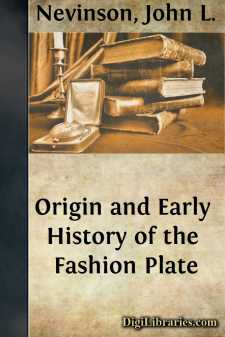Categories
- Antiques & Collectibles 13
- Architecture 36
- Art 48
- Bibles 22
- Biography & Autobiography 813
- Body, Mind & Spirit 142
- Business & Economics 28
- Children's Books 17
- Children's Fiction 14
- Computers 4
- Cooking 94
- Crafts & Hobbies 4
- Drama 346
- Education 46
- Family & Relationships 57
- Fiction 11829
- Games 19
- Gardening 17
- Health & Fitness 34
- History 1377
- House & Home 1
- Humor 147
- Juvenile Fiction 1873
- Juvenile Nonfiction 202
- Language Arts & Disciplines 88
- Law 16
- Literary Collections 686
- Literary Criticism 179
- Mathematics 13
- Medical 41
- Music 40
- Nature 179
- Non-Classifiable 1768
- Performing Arts 7
- Periodicals 1453
- Philosophy 64
- Photography 2
- Poetry 896
- Political Science 203
- Psychology 42
- Reference 154
- Religion 513
- Science 126
- Self-Help 84
- Social Science 81
- Sports & Recreation 34
- Study Aids 3
- Technology & Engineering 59
- Transportation 23
- Travel 463
- True Crime 29
Origin and Early History of the Fashion Plate
by: John L. Nevinson
Description:
Excerpt
A fashion plate is a costume portrait indicating a suitable style of clothing that can be made or secured. Fashion illustration began in the late 15th and early 16th centuries with portrait pictures that made a personâs identity known not by his individual features but rather by his dress.
This paper, based on a lecture given in the fall of 1963 at the Metropolitan Museum, New York, traces the history of the fashion plate from its origins to its full development in the 19th century. With the improvements in transportation and communication, increased attention came to be paid to foreign fashions, accessories, and even to hairstyles. As the reading public grew, so fashion consciousness increased, and magazines, wholly or partly devoted to fashions, flourished and were widely read in the middle social classes; this growth of fashion periodicals also is briefly described here.
The Author: John L. Nevinson, retired, was formerly with The Victoria and Albert Museum, London. He now devotes himself to full-time research on costumes and their history.
Fashion may be defined as a general style of dress appropriate for a particular person to wear at a certain time of day, on a special occasion, or for a specific purpose.
A fashion plate is a costume portrait, that is to say, a portrait not of an individual but one which shows the sort of clothes that are being worn or that are likely to be worn. It is a generalized portrait, indicating the style of clothes that a tailor, dressmaker, or store can make or supply, or showing how different materials can be made up into clothes. A fashion plate is related to the wear of its epoch and not to the history of dress, except insofar as the dress of a historical personage may be imitated at a later date. A fashion plate is reproduced mechanically, the woodcuts and engravings of earlier dates being succeeded by lithographs and finally by the various photographic processes of our time.
This definition of a fashion plate is broader than the one adopted by Mr. Vyvyan Holland, who has written the only substantial book on the subject. Mr. Holland limited his study to hand-colored fashion plates of the period from 1770 to 1899, possibly because these are most in favor with collectors. He omitted trade and advertisement plates, believing them to be primarily concerned with the history of dress.
The main functions of fashionable dress are to draw attention to the wearer, to define his social position, and to show who he is and what he is doing. Modesty, protection against the weather, and appeal to the opposite sex, are, so far as fashion is concerned, subsidiary functions. Interest in fashionable dress goes back at least to the 16th century, as is evidenced by a popular dialogue written by Alessandro Piccolomini, a relative of Pope Pius II, who subsequently became coadjutor Archbishop of Siena. Piccolomini wrote under the pseudonym âLo Stordito,â and it is not clear to what extent the dialogue was sponsored by the Academy of the Intronati, an aristocratic, literary, and social society of which he was a member. He stated that the requirements of fashionable dress were that it be sumptuous in material, tasteful in style, and borne gracefully by the wearer. Unfortunately for the costume historian, the dialogue is not illustrated....


